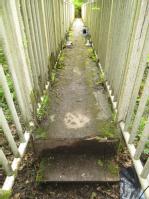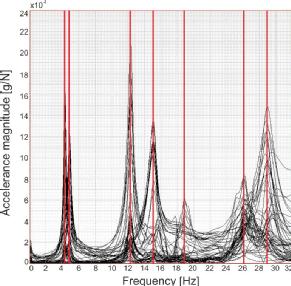Box-girder bridge
This pedestrian bridge crosses a river in a narrow, picturesque valley in Wales, UK. It is a 16.9m long, single span structure. Due to the site being inaccessible by road, the bridge was transported and put in place by a local helicopter. This was only possible because the structure is extremely light, weighing about 1,800kg only. Ease of installation of this bridge in a site inaccessible by roads is an excellent example of benefits that FRPs offer over other construction materials. Some photos of the bridge are shown in Figure 1.
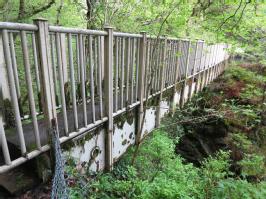 |
Figure 1 |
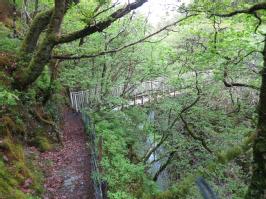 |
Modal testing
Frequency response function (FRF) based modal testing was conducted to determine modal properties of this bridge. The input force was generated using an instrumented hammer and the vertical vibration response was measured at 18 points on the bridge deck to determine the vertical/torsional vibration modes. The lateral response was also measured at the nine points alongside one edge of the bridge deck, when lateral impact force was applied. Seven vibration modes in the frequency range up to 30Hz were identified; these can be observed in Figure 2 representing all the measured FRFs.
The fundamental natural frequency of the lateral flexural mode is at 4.3Hz, a little lower than that for the first vertical flexural mode at 4.8Hz. The damping ratios of these two modes are 1.6% and 2.4%, respectively. The frequency and the damping ratio of the first vertical mode were found to be amplitude dependent.
It was also found that human presence on the structure during modal testing increases both natural frequency and damping ratio of the first vertical mode. These findings will be elaborated in a journal paper that is currently under review.
|
Figure 2 |
Response measurements
A set of tests involving three people crossing the bridge, one at a time, at a range of pacing frequencies specified by a metronome. The acceleration response in the first three vertical modes was most significant. The maximum measured peak acceleration of 1.44m/s2 was found to be perceptible, but short-lasting.
Gallery
The photos on the right-hand side of this page illustrate the fun of the field work - including unpredictable micro-climate.
Publications
- Zivanovic, S., Wei, X., Russell, J. and Mottram, J. T. (2017) Vibration Performance of Two FRP Footbridge Structures in the United Kingdom. Footbridge 2017, Berlin, Germany, 6 - 8 September.
- Wei, X., Russell, J., Zivanovic, S. and Mottram, J. T. (2018) The Effects of Hammer Operator in Manually Operated Impact Hammer Testing of Lightweight Structures. The World Conference on Structural Control and Monitoring WCSCM2018, Qingdao, China, 22 - 25 July.
Photo Gallery
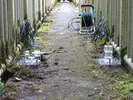 Accelerometers |
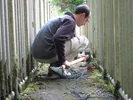 Impact force |
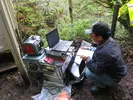 Data acquisition |
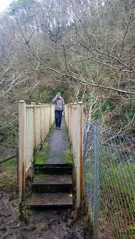 Response test |
 Accelerometer |
 Elements |
 Equipment |
 Underside |

